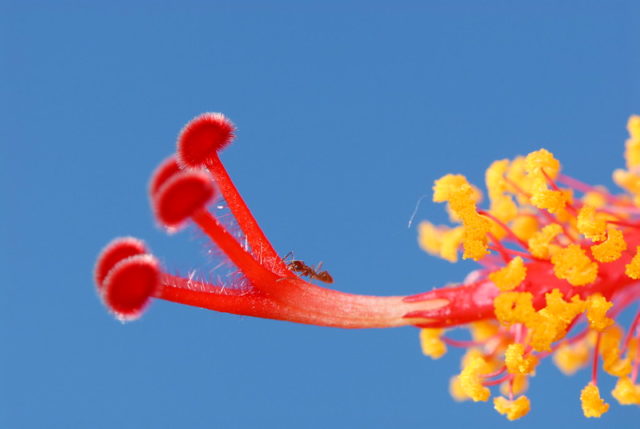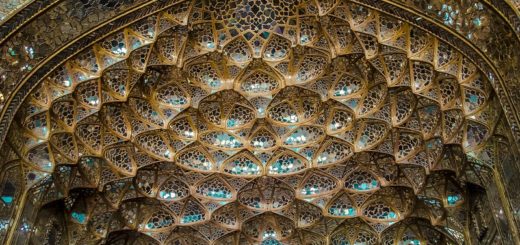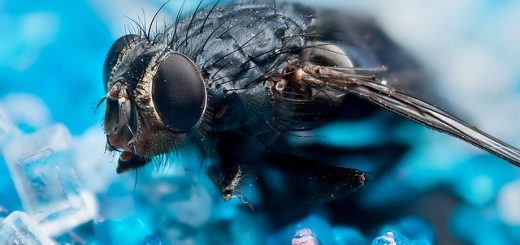Colony structure and global spread of the Argentine ant

In a generic ant colony a single nest contains a few male drones for female fertilisation, one queen who lays the eggs and sterile female workers responsible for brood care, foraging, nest defence and fighting1. All workers in the colony maintain strict borders and are highly aggressive towards any non-nestmate alien intruders. This cooperation that is shown between nestmates is simple, efficient and masterful.
The Argentine ant, often called the ‘sugar ant’ in Argentina thanks to its preference for sweeter substances, is an invasive species of ant. This means that it is an organism that spreads away from its native home, occupying other locations and possibly causing harm to its new environment. Argentine ants have a vastly different social organisation to the typical ant colony as they have multiple queens and have the rare capability to form ‘supercolonies’2. The development of supercolonies usually occurs when a single nest is split into multiple nests and vast networks of numerous interconnected nest clusters are created. This leads to the formation of large social units in which all potential borders between separate nests have been lost3.

This species of ant has been dubbed the ‘sugar ant’ thanks to its preference for sweeter substances. Image Credit: Penarc via wikicommons
Supercolonies are capable of growing so large that direct interaction between all individuals across the entire colony is no longer possible. In the case of the Argentine ant, the growth of supercolonies tends to continue so long as there is unused space available. Within a supercolony, ants show no discrimination between nestmates and non-nestmates, regardless of geographical location4. This is an impressive feat given that Argentine ants’ supercolonies can grow to be at least 6000km wide, with millions of different nests and hundreds and thousands of queens5.
Within social insects in general, chemical cues or signals, comprising a specific chemical composition of hydrocarbons, are used for nestmate recognition. These cues are generally learned soon after ants enter the adult stage of their lives and form a template of reference that allows them to discriminate alien individuals from nestmates. Cues are located in the cuticle (outer skin) and their formation is impacted by both genetic and environmental factors6. In the case of the Argentine ant, ants of the same supercolony that originate from nests thousands of kilometres apart have the same chemical cues7. This amazing feat is a key driver for their unicolonial behaviour.
The Argentine ant is thought to have been accidentally introduced to at least 28 different locations around the world, typically settling in Mediterranian-type climates. The earliest known introduction was in 1882 on Madeira Island in Portugal, however many other populations were also established throughout the 1900s8. Currently, multiple Argentine ant supercolonies span throughout New Zealand, Australia, Japan, Hawaii, California and Europe. These ants have little difficulty in crossing great distances (using human transport) thanks to their flexible nesting habits, a generalist diet and the ability to establish colonies with just a single queen and as little as ten workers present.
The most significant attribute associated with the success of Argentine ants is their unicolonial behaviour. Just the sheer quantity of ants contained within their giant supercolonies gives them a great advantage in terms of competition against other species. This is especially true when it comes to direct battles over resources, with a high tendency shown by Argentine ants to both initiate and survive attacks from alien colonies9. As well as this, their high numbers allow them to utilise resources rapidly in new areas before native colonies have the opportunity to utilise them themselves, meaning dominance in all locations is maintained.
In 2009, it was proposed that several of the geographically separated supercolonies of the Argentine ant in fact make up one single global “megacolony”10. This giant supercolony consists of trillions of ants overall, all of whom show little to no aggression towards each other. In general, ants have a remarkable ability to work as a single unit, to the point where some researchers have suggested that ant colonies can be seen as a powerful analogue to cells working together in the body, making colonies one giant “superorganism”11. If this is the case then, in a sense, this Argentine ant megacolony can be viewed as a single superorganism spanning the entire globe.
In the past, supercolonies, as a form of social organisation, have been described as maladaptive because their existence poses a potential problem for social evolutionary theory. “Kin selection theory” proclaims the idea that unselfish behaviour is beneficial and favoured when the overall relatedness between individuals and benefit to others outweighs the negative cost on the acting individual, allowing selflessness to persist throughout generations12. It offers an explanation behind the lack of selfishness shown by the genes of worker ants which do not allow the worker ants to reproduce13. However, the development of a supercolony results in an extremely low relatedness between nestmates due to constant movement between interconnected nests. Therefore, kin selection cannot occur so the selfish gene coding for queen development should be selected for and the number of worker ants should fall. The fact that this does not happen in supercolonies makes them an evolutionary paradox.

The Argentine ant defies the laws of social evolution. Image Credit: Sam Fraser-Smith via flickr.com
Somehow, this invasive species of ant has taken over the world and giant supercolonies have thrived, yielding significant advantages in terms of competition for resources and space. Interestingly, in recent years, there has been evidence that some geographically separated supercolonies of Argentine ants all belong to a single “megacolony” due to a remarkable discrimination ability controlled by specific chemical cues. Despite supercolonies’ maladaptive nature in relation to the problem they pose for kin selection theory, the overall future survival of the Argentine ant is yet to be observed.
This article was specialist edited by Alex Brumwell and copy-edited by Gemma Donnelly.
References
- https://www.cell.com/current-biology/pdf/S0960-9822(12)00870-6.pdf
- https://core.ac.uk/download/pdf/77168374.pdf
- Take a look here for more information on supercolony formation: https://www.antwiki.org/wiki/Supercolonies
- https://www.pnas.org/content/99/9/6075
- https://www.researchgate.net/publication/11407363_Giraud_T_Pedersen_JS_Keller_L_Evolution_of_supercolonies_the_Argentine_ants_of_southern_Europe_Proc_Natl_Acad_Sci_USA_99_6075-6079
- Check out https://www.researchgate.net/publication/226141226_The_role_of_cuticular_hydrocarbons_as_chemical_cues_for_nestmate_recognition_in_the_invasive_Argentine_ant_Linepithema_humile for more information on chemical cues
- https://academic.oup.com/beheco/article/23/5/925/232024
- https://www.ncbi.nlm.nih.gov/pmc/articles/PMC14714/
- https://besjournals.onlinelibrary.wiley.com/doi/pdfdirect/10.1111/j.1365-2664.2008.01523.x
- Here is a link to the original article on the global megacolony: https://www.researchgate.net/publication/226561934_Intercontinental_union_of_Argentine_ants_Behavioral_relationships_among_introduced_populations_in_Europe_North_America_and_Asia
- https://www.researchgate.net/publication/256459141_The_Superorganism_Revisited
- https://pdfs.semanticscholar.org/c9c0/525156595b386e1e28acf779c17f953f3458.pdf
- https://embryo.asu.edu/pages/testing-kin-selection-theory-who-controls-investments-ants-1990-bert-holldobler-and-edward-o










